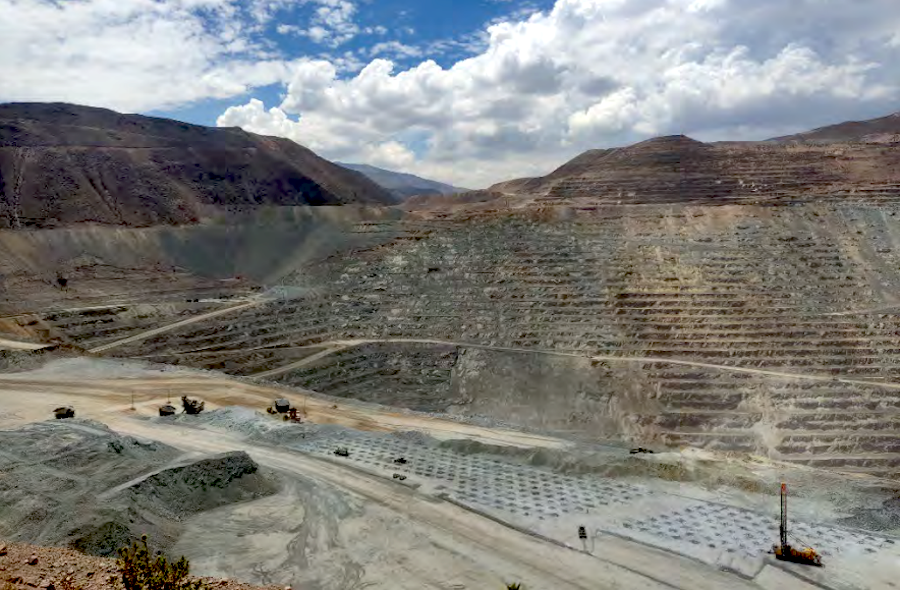Glencore turns bigger copper, zinc price bull

Miner and commodities trader Glencore (LON:GLEN) raised its revenue and profit outlook for the year on Thursday with the Swiss company citing the fast-growing electric vehicle market as a key driver.
“Most automotive players are now accelerating investment in/adoption of electric vehicle technologies, reflecting, in part, increasingly aggressive Government mandates around emission targets. Growth in electric vehicle/energy storage systems requires changes in material flows, including the installation, rebuild and replacement of supporting infrastructure. Based on current and emerging technologies, these changes should benefit enabling commodities such as copper, cobalt and nickel,” Glencore said in a statement accompanying its half-year results.
The electric vehicle revolution is happening and its impact is likely to be felt faster than expected
Vehicles with conventional internal combustion engines typically contain about 20 kilograms of copper. For electric vehicles the copper load is up to 80 kilograms (and increased quantities of cobalt, nickel, manganese). Ivan Glasenberg, CEO of Glencore told investors at an industry meeting in Barcelona in May “the electric vehicle revolution is happening and its impact is likely to be felt faster than expected.”
Glencore is the world’s number four copper producer, top three zinc supplier and has a tight grip on cobalt mining. Tts clout on base metals markets is only amplified by its trading arm. During the first six months of 2017 Glencore’s metals and minerals division recorded revenues of $37.4 billion, up 20% compared to the same period last year. The company’s marketing activities make up just shy of two-thirds of total revenues.
Here are some highlights from Glencore’s outlook for its base metals business:
Copper and cobalt
Predictably, after several years of depressed prices, copper’s rapid recovery in November 2016 resulted in a significant amount of long-held scrap flowing into the market. Such availability widened the price discount between cathodes and scrap, encouraging fabricators to switch to scrap and giving the illusion of deteriorating fundamentals via falling cathode premiums, when in fact demand growth appears solid across all the major consuming regions.
Chinese macro and demand data remains supportive with similar trends seen in Europe and North America, as global PMI data recorded a six year high in June. The flood of scrap into the market, along with drawdowns of concentrates and blister stocks from the raw materials chain, tempered the impact of significant mine disruptions on cathode production.
Favourable demand conditions across key consuming regions, combined with elevated risk of mine disruptions, should lend support over the balance of the year, particularly given that scrap supply has now normalised and copper units have been drawn from the supply chain. Longer term, a lack of sector reinvestment, significant potential new demand from battery growth and technology, aging assets and a diminished realistic project pipeline, are likely to underpin significant deficits in the coming years.
Zinc and lead
China’s end user demand for zinc-bearing finished products remained healthy, as the infrastructure, real estate and white goods sectors continued to show resilience over the half, following a strong 2016. As a result, SHFE metal stocks dropped by more than 50% since December 2016 to 65,000 tonnes, the lowest since Q1 2009.
As the metal market is currently in deficit, any disruption of supply such as the one experienced in North America, is difficult and costly to replace, driving up regional premiums. Metal stocks have started to flow out of LME warehouses at an increasing pace; 137,000 tonnes since December 2016 to some 291,000 tonnes, a trend we expect to continue in H2 2017.
The lead market is challenged with similar factors. The lack of supply translated into the lead benchmark TC dropping from $170/dmt over H1 2016 to $125/dmt over H1 2017. Spot TCs of imports into China also fell sharply from $151/dmt in H1 2016 to $36/dmt in H1 2017.
Nickel
Although positive demand momentum continued in Europe and the US, the buoyancy of Chinese demand growth faltered somewhat in Q2 when tightened liquidity led to heavy destocking through to the first week of June, impacting both stainless production and nickel procurement. While this destocking appears to have run its course and demand growth has returned, developments on the supply side, specifically Indonesia’s reversal of a ban on ore exports, have tilted risks towards increased supply and reduced the scale of forecast deficits, albeit non-Chinese production continues to underperform.
While our estimates indicate that the market was in deficit over H1 2017 and will continue to be through the year, the high absolute level of LME and SHFE stocks, together with concerns about additional supply from Indonesia, continue to weigh on sentiment and prices, albeit premiums are expected to remain strong.
The Baar-HQed company increased copper sales by 6% to 1.9m tonnes, but production from its own mines fell by 9% to 643kt. Zinc and lead sales were flat, but Glencore’s own output of zinc jumped 13% to 570kt while lead output fell 4% to 139kt. Nickel production during the six months fell by 10% to 51.2kt. Cobalt production, a byproduct of copper and nickel mining, was flat at 12.7kt giving Glencore a roughly 25% share of global supply.
More News
Southern Copper says 20 injured in attack at Peru mining project
Images circulated on social media showed the Los Chancas mining camp in flames, reminiscent of a 2022 incident.
March 17, 2025 | 02:19 pm
PDAC 2025 JV Video: Exploration has reached its ‘ChatGPT moment,’ Vrify CEO says
“By placing advanced technology in the hands of geologists, Vrify empowers technical teams to make swift, data-driven decisions.”
March 17, 2025 | 02:13 pm
Baru Gold plunges after investment deals break down
Baru Gold has been looking to bring the Sangihe gold project, situated on the Indonesian island of the same name, into production.
March 17, 2025 | 02:05 pm
{{ commodity.name }}
{{ post.title }}
{{ post.excerpt }}
{{ post.date }}




Comments